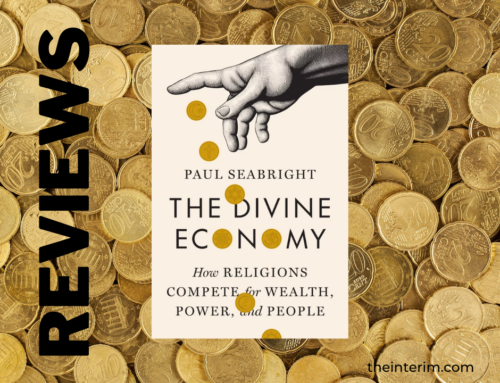On April 11 2019, something quite unexpected occurred. After six years of near-total silence, pope emeritus Benedict XVI, published “The Church and the Scandal of Sexual Abuse,” an essay which offers an important supplement to the discourse about what the retired pontiff calls, at the outset, “the current crisis of the faith and of the Church; a crisis experienced throughout the world after shocking revelations of clerical abuse perpetrated against minors.” This lucid characterization of the crisis sets the tone for the rest of Benedict’s scholarly examination of the historical origins and response to this crisis, and the remedies he proposes at the end: before being a crisis of the Church, the present calamity is, above all, a crisis of faith.
This wasn’t the primary diagnosis of the recently-convened Vatican Summit on the same subject. From that meeting of bishops in February, a different characterization emerged: the crisis has its origins in “clericalism,” of the abusive structures of power at play in Church hierarchies at every level. While not contradicting this conclusion, Benedict adds a crucial but neglected spiritual dimension to this diagnosis. Indeed, his essay is nothing so much as an energetic effort to recast the terms in which this crisis is understood. The language and categories of the media and the world have seeped into the very language in which clerics themselves discuss the crisis. Benedict ruefully notes that not only does one now speak of the Church “in political categories,” but that “this applies even to bishops, who formulate their conception of the church of tomorrow almost exclusively in political terms.”
The hostile reaction that has greeted Benedict’s intervention in this critical public conversation illustrates the acuity of this critique—and proves, as well, a crucial point he made about Vatican II in one of his final addresses before his retirement. In that interview from February of 2013, the then-Pontiff reflected on the way that the work that he and his conciliar colleagues had accomplished in carefully worded documents was systematically undermined by the press. The political categories of the media not only concealed the real, renewing, and dynamic developments that emerged from the Council, but also distorted and misrepresented them in public discourse. The Council in Rome was drowned out by what Benedict then called the “Council of the media.”
In the half-century since Vatican II, this state of affairs has only become worse. Indeed, the media immediately took Benedict’s essay to be an “attack” on Pope Francis. Noting the absence of the term “clericalism” in Benedict’s text, voices in the press hastily concluded that his contribution was really a counter-blast, a “conservative” broadside attack against the current, “liberal” pope. Not only is this an unsupportable misreading of the essay, but it also entirely ignores its point about the impropriety of these very terms. It also misses the deep compatibility of the two diagnoses. Clericalism, the abusive excess of institutional authority, goes hand-in-hand with the dereliction of moral duty. Benedict sees the reluctance of some in the Church to offer clear moral teaching on pressing contemporary issues as the result of the overly accommodating theological projects since the 1960s. The institutional abuse of clericalism has its root in this spiritual compromise. Indeed, the clearest, more pernicious, and more damaging example of clericalism is precisely the confusion that those with moral authority have spread.
“Why did pedophilia reach such proportions? Ultimately, the reason is the absence of God.” Benedict’s clear-eyed conviction cuts across the popular, categories of the press and goes directly to the heart of the matter; and his caution, to us in the pro-life movement, is to see the issues we face with similar clarity. For the crisis in the Church – like the moral crisis in Western morals –is not primarily political. Indeed, the atheistic political systems of the 20th-century that unleashed so much bloodshed and destruction did so by denying this very dimension of reality. We endorse this fatal mistake whenever we concede the terms of our own pressing debates to our opponents.
We must never cede the terrain of moral issues to the ever-encroaching categories of our contemporary culture. Although the legal protection of the unborn and the rehabilitation of cultural values in Canada more generally must interface with politics, this is only because of the confusion of moral and political issues. Our defense of the unborn is, ultimately, an affirmation of the limits of government, of what can be defined and enshrined in law.
In addition to being a roadmap for reform, Benedict’s essay is also a counsel against rupture. “What must be done? Perhaps we should create another Church for things to work out?” The retired pontiff’s rhetorical questions point to the futility of a discouragement which will only lead to further division and eventual defeat. Instead of creating fissures within the pro-life movement in Canada, a younger generation needs to inject old institutions with new energy, to carry on a proud tradition of moral activism just as we ourselves extend a continuum that extends well into the past. Just as there is hope for the Church, so too is there hope for moral sanity in Canada, if only we return to the fundamental truths that political discourse obscures.




